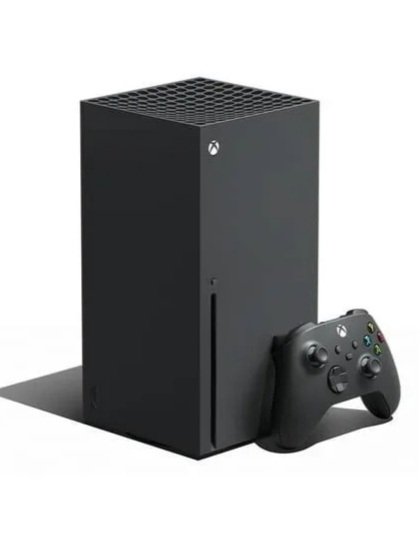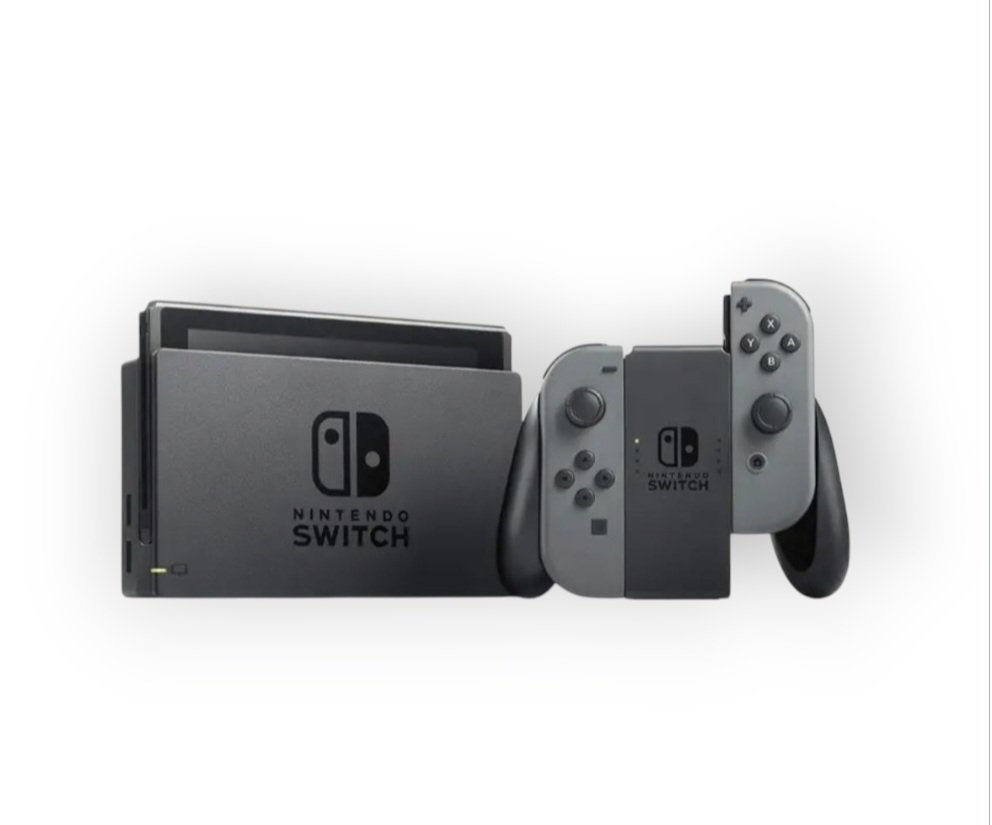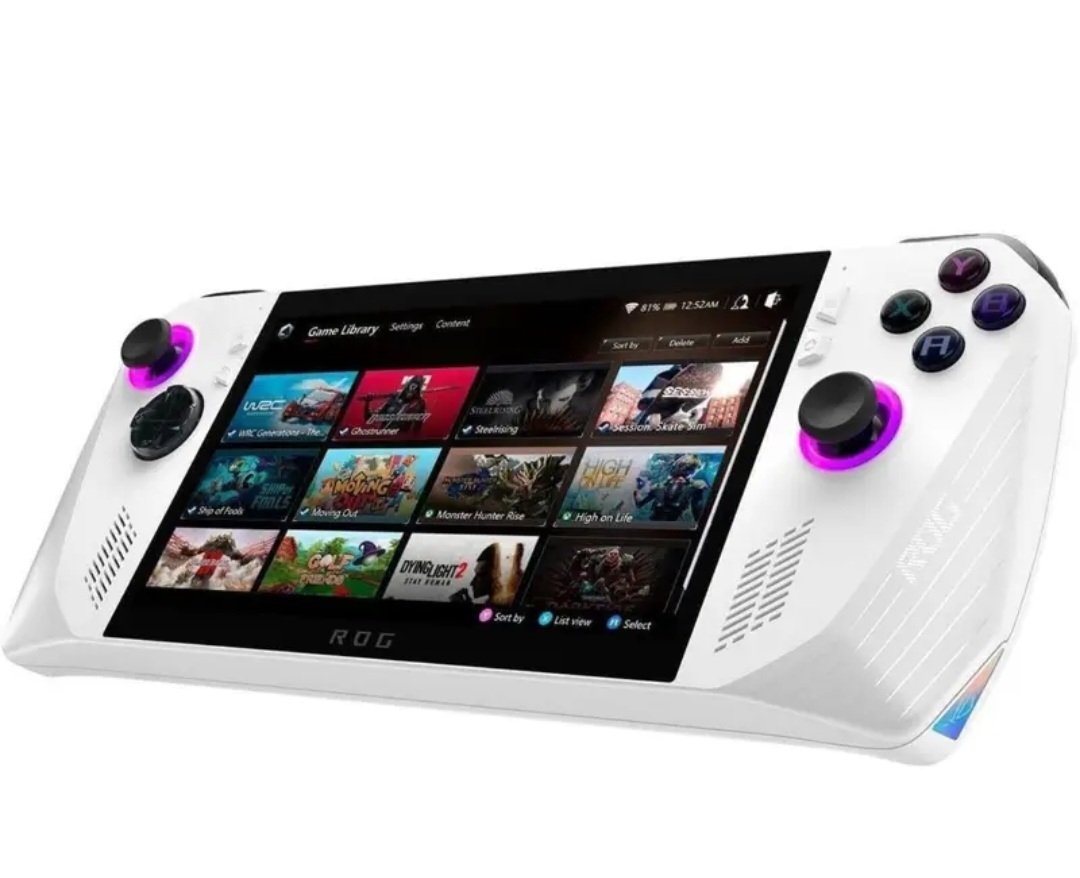Introduction: The Gaming Landscape Today
In recent years, the gaming industry has undergone a remarkable transformation, becoming one of the most dynamic and lucrative entertainment sectors globally. With the release of next-gen consoles such as the PlayStation 5 (PS5), Xbox Series X, and Nintendo Switch, the competition among platforms has intensified, drawing the attention of both casual and hardcore gamers alike. Each console brings forth unique features and innovations, reshaping the way we engage with the medium.
The evolution of gaming has transitioned from simple arcade experiences to complex, immersive virtual worlds. Consoles have become advanced entertainment hubs equipped with cutting-edge technology, dazzling graphics, and expansive online networks. This progression signifies not merely a technological leap but a fundamental shift in how players interact with games and one another. In this environment, the PS5, Xbox Series X, and Nintendo Switch stand out, each catering to diverse gaming preferences and styles.
For instance, the PS5 has garnered attention for its exceptional graphics capabilities, lightning-fast loading times, and robust game library that appeals to enthusiasts of storytelling and single-player experiences. Conversely, the Xbox Series X emphasizes raw performance and compatibility, with an alluring Game Pass service that provides access to a vast catalog of games across different generations. Meanwhile, the Nintendo Switch continues to champion its portability and family-friendly content, establishing a niche that distinguishes it from its counterparts.
As we delve deeper into the intricacies of these consoles, it is crucial to recognize how their distinct features address varying gamer demographics. Understanding the gaming landscape requires more than just a cursory glance at specifications; it encompasses an appreciation of the titles, communities, and overall experiences that each console offers. Thus, exploring these three major players in the gaming arena not only sparks curiosity but necessitates a thorough examination of their respective strengths and weaknesses.
Overview of Gaming Consoles
Gaming consoles have cemented their place as a cornerstone of modern entertainment, providing immersive experiences that engage players worldwide. They serve not only as platforms for interactive play but also as cultural phenomena that influence social interactions, entertainment consumption patterns, and even technological advancements. The current market is dominated by three major consoles: Sony’s PlayStation 5 (PS5), Microsoft’s Xbox Series X, and Nintendo’s Switch, each offering unique features that cater to different segments of gamers.
The PS5 was released in November 2020, heralding a new generation of gaming with its powerful hardware, rapid loading times, and innovative DualSense controller, which offers a more tactile gaming experience. Initial reactions highlighted its performance capabilities and exclusive game titles that quickly became fan favorites, setting a high standard for next-gen gaming.
Similarly, the Xbox Series X launched in the same month, boasting impressive specifications that rival its competition. It emphasizes backward compatibility, allowing players to enjoy a vast library of games from previous Xbox generations. Additionally, the integration of Xbox Game Pass, a subscription service that provides access to a rotating catalog of games, solidifies its appeal to a broad audience.
In contrast, the Nintendo Switch, which debuted earlier in March 2017, marked a significant shift in gaming dynamics with its hybrid design. Enabling both handheld and home console gaming, the Switch has captured a diverse demographic, including families and casual gamers. Titles such as “Animal Crossing: New Horizons” and “The Legend of Zelda: Breath of the Wild” have reinforced its market presence, demonstrating that innovative game design can rival the technical prowess of competitors.
Overall, these consoles not only reflect advancements in technology but also highlight changing consumer expectations in the gaming landscape. Their distinct features and target audiences shape the diverse ecosystem of gaming today, creating a competitive environment ripe for controversy and comparison.
Sony PlayStation 5: A Glimpse into the Future

The Sony PlayStation 5 (PS5) has captured the attention of gamers worldwide, marking a significant advancement in console technology. At the heart of the PS5 lies its powerful hardware, featuring a custom AMD Zen 2 processor that delivers impressive performance. With its integrated SSD, the PS5 notably reduces load times, allowing players to immerse themselves in games more swiftly than ever before. The console’s capability to support 4K gaming and up to 120 frames per second enriches the visual experience, making it a compelling choice for both serious gamers and casual players alike.
One of the standout attributes of the PS5 is its extensive library of exclusive games. Titles such as “Demon’s Souls,” “Ratchet & Clank: Rift Apart,” and “Spider-Man: Miles Morales” showcase not only the graphical prowess of the console but also exhibit innovative gameplay mechanics that fully utilize the new hardware capabilities. These exclusive games serve to differentiate the PS5 within the competitive landscape of gaming consoles, drawing dedicated fans to invest in Sony’s offering.
Another significant advancement is the new DualSense controller, which introduces haptic feedback and adaptive triggers. These features provide more tactile and immersive gameplay experiences, allowing players to feel in-game actions more intuitively than before. The DualSense’s ergonomic design contributes to comfort during extended gaming sessions, underscoring Sony’s commitment to enhancing user experience.
However, potential buyers should also consider some drawbacks and availabilitya challenge, with the PS5 often hard to find due to high demand. Additionally, the price point may deter some gamers, especially when comparing it to other consoles in the market. Consequently, while the PS5 represents a leap forward in console design and performance, factors such as stock and cost must be weighed when deciding on this next-generation gaming platform.
Microsoft Xbox Series X: Power and Performance

The Microsoft Xbox Series X stands as a formidable contender in the gaming console landscape, offering unparalleled power and performance that are pivotal for both gamers and developers. At its core, the Xbox Series X is equipped with a custom AMD Zen 2 processor, boasting 8 cores with a clock speed of 3.8 GHz. This powerful CPU, paired with its RDNA 2 architecture, facilitates stunning graphics and immersive gameplay experiences. In terms of performance metrics, the console supports 4K gaming at 60 frames per second, with the potential to reach up to 120 frames per second. The capability for ray tracing enhances the visual fidelity, drawing gamers into highly detailed gaming worlds.
One of the standout features of the Xbox Series X is the Game Pass subscription model. This offering allows gamers access to an extensive library of titles across various genres, including first-party exclusives and indie games, all for a monthly fee. This model has revolutionized how players experience gaming, reminiscent of streaming services in its convenience and affordability. Additionally, the Xbox Series X is backward compatible with thousands of titles from previous Xbox generations, ensuring that players can enjoy their old favorites without losing the advantages of new technology.
However, while the Xbox Series X excels in many areas, it is not without limitations. Compared to the PlayStation 5, which boasts a faster SSD, loading times on the Xbox Series X may be marginally longer, although improvements are continually being made via system updates. Furthermore, while its exclusive titles are impressive, some gamers feel they lag behind the lineup of the PS5. Nonetheless, the versatility and hardware capabilities of the Xbox Series X solidify its position as a powerful option for gamers seeking both performance and a rich gaming ecosystem.
Nintendo Switch: Innovation in Handheld Gaming

The Nintendo Switch has revolutionized the console gaming landscape with its innovative hybrid design, allowing users to enjoy gaming both at home and on the go. This versatility has made it a compelling choice for diverse audiences, from casual gamers to dedicated enthusiasts. As a portable device, the Nintendo Switch provides the convenience of active gameplay, which is particularly appealing for families and gamers who appreciate mobility. The Switch can quickly transition from a traditional gaming console that connects to a television to a handheld device that can be played anywhere, a feature that sets it apart from its powerful competitors like the PS5 and Xbox Series X.
A significant strength of the Nintendo Switch is its library of exclusive games. Titles such as “The Legend of Zelda: Breath of the Wild,” “Super Mario Odyssey,” and “Animal Crossing: New Horizons” demonstrate Nintendo’s commitment to delivering unique gaming experiences that resonate with a wide demographic. These family-friendly games foster social gaming experiences, encouraging multiplayer interactions that appeal to both young audiences and seasoned players. The socially engaging nature of Nintendo’s offerings has reinforced its popularity as a family-oriented console.
Battery life is another aspect where the Nintendo Switch excels, enabling users to partake in lengthy gaming sessions without frequent interruptions. On average, users can expect approximately four to nine hours of playtime, depending on the intensity of the game being played. Additionally, the customizability of controllers, such as the Joy-Con and the Pro Controller, provides gamers with personal preferences while enhancing comfort and control during gameplay.
However, despite its innovative features, the Nintendo Switch faces some shortcomings when compared to the formidable specifications of the PS5 and Xbox Series X. Notably, the graphics and performance capabilities may not match the 4K experiences offered by its competitors. Nevertheless, the Nintendo Switch has carved a niche with its unique approach, engaging content, and handheld convenience, making it a formidable competitor in the gaming market.
Budget-Friendly Alternatives: Temu Recommendations
In the ever-evolving world of gaming, the choice of consoles and accessories can greatly influence the overall gaming experience. However, not every gamer has the budget to splurge on high-end gear. Temu, a rapidly emerging online platform, offers an array of budget-friendly alternatives that cater to gamers looking for value without compromising on quality. Below, we highlight some standout items available on Temu that are certainly worth considering.

Firstly, the Wireless Gaming Controller is an excellent choice for those seeking performance at an affordable price point. Designed to be compatible with multiple gaming consoles, it features responsive buttons and a comfortable grip. The key advantage of this controller is its extended battery life, which can last up to 20 hours on a single charge, making it ideal for long gaming sessions. However, some users have noted occasional connectivity issues with the Bluetooth feature. The price typically ranges from $25 to $35, making it a solid investment for casual gamers.
Another great option is the Universal Gaming Headset, which delivers immersive sound and clear communication during multiplayer sessions. With padded ear cups designed for comfort and adjustable headbands, this headset is suitable for marathon gaming nights. The notable drawback is the lack of advanced noise-cancellation technology, which may not meet the expectations of more serious gamers. Priced between $20 and $30, it provides an affordable solution for gamers on the go.
Lastly, the Gaming Mouse Pad with RGB Lighting enhances both aesthetics and functionality for PC gamers. The non-slip surface ensures precision handling, while customizable LED lights add a touch of flair to any gaming setup. Despite its attractive features, the downside is that it requires USB connectivity to power the lights, limiting portability. With a price range of $15 to $25, it’s an economical accessory that can upgrade any gamer’s workspace.
In conclusion, Temu offers viable and affordable alternatives to traditional gaming accessories. These recommended products strike a balance between cost and performance, providing gamers with practical choices that don’t break the bank.
Comparative Analysis: Specs and Performance
The gaming landscape has evolved significantly with the launch of the PlayStation 5 (PS5), Xbox Series X, and Nintendo Switch. Each console brings unique specifications and performance metrics that cater to different gaming preferences and experiences. Within this comparative analysis, we will delve into the details, allowing for a clear understanding of the strengths and weaknesses of each device.
Starting with the PS5, it features a custom 8-core AMD Zen 2 CPU, offering performance speeds up to 3.5 GHz. Coupled with an RDNA 2-based GPU, the PS5 can deliver up to 10.28 teraflops of graphical performance. It also comes with 16 GB of GDDR6 RAM and a custom SSD, utilizing high-speed data transfer that enhances loading times. Notably, the PS5 supports 4K gaming up to 120 frames per second, making it a formidable option for visually demanding titles.
In contrast, the Xbox Series X boasts a slightly more powerful configuration with an 8-core AMD Zen 2 CPU clocked at 3.8 GHz and a GPU with performance capabilities reaching 12 teraflops. The 16 GB of GDDR6 RAM and an impressive SSD solidify its standing among next-generation consoles, allowing for seamless transitions between games. Additionally, it supports both 4K gaming and 120 frames per second. The Xbox Series X also offers backward compatibility, enabling players to enjoy a vast library of previous generation titles.
On the other hand, the Nintendo Switch presents a unique hybrid design, functioning both as a home console and a portable device. It is powered by a custom NVIDIA Tegra X1 chip, which, while less potent in raw processing power—approximately 1 teraflop—offers versatility for on-the-go gaming. The Switch supports a maximum resolution of 720p in handheld mode and 1080p when docked, catering to a different segment of the gaming community focused more on portability than performance.
Overall, while the PS5 and Xbox Series X lead in technical specifications and graphical prowess, the Nintendo Switch offers unparalleled flexibility. The choice of console ultimately depends on player preferences regarding performance, style of play, and exclusive content availability.
User Experiences and Community Feedback
The gaming community plays a pivotal role in shaping perceptions of consoles like the PS5, Xbox Series X, and Nintendo Switch. User experiences vary significantly, reflecting preferences and priorities among gamers. The PS5 has been praised for its groundbreaking exclusive titles and impressive graphics. Many players on forums and social media platforms frequently highlight games like “Demon’s Souls” and “Ratchet & Clank: Rift Apart” as benchmarks of performance, showcasing the console’s capabilities.
Conversely, the Xbox Series X receives commendations for its backward compatibility and the Game Pass subscription service, which many users find invaluable. Various community threads discuss the seamless access to a wide array of games spanning multiple Xbox generations, solidifying Xbox’s reputation as a hub for older titles. This functionality has created a sense of community among players who appreciate a rich library without needing to purchase each game individually.
Nintendo Switch, on the other hand, has carved out a unique niche with its hybrid functionality. Users often commend the console for its portability and innovative titles like “The Legend of Zelda: Breath of the Wild” and “Animal Crossing: New Horizons.” Feedback from social media indicates that many gamers enjoy the ability to switch effortlessly between console and handheld modes, making the Switch particularly appealing for on-the-go gaming. However, some users express concerns regarding its hardware limitations compared to its rivals.
In terms of customer support, feedback varies based on individual interactions with each company’s support teams. Many community members report a quick response time from Sony and Microsoft, while some users have noted frustrations with Nintendo’s support system. Overall, the gaming community continues to discuss their experiences, contributing to a rich tapestry of feedback that influences future console preferences and developments.
Conclusion: Which Console is Right for You?
As the gaming landscape continues to evolve, selecting the right console remains a paramount decision for many enthusiasts. The PlayStation 5, Xbox Series X, and Nintendo Switch each offer unique features and experiences that cater to diverse gaming preferences. Recognizing the differences among these systems can greatly assist gamers in making an informed choice that aligns with their lifestyle and gaming habits.
For those seeking cutting-edge graphics and exclusive titles, the PlayStation 5 emerges as a strong contender. With its robust library of games and advanced capabilities, it is ideal for players who prioritize immersive storytelling and high-fidelity visuals. Conversely, the Xbox Series X appeals to gamers who value a comprehensive ecosystem, thanks to its integration with Xbox Game Pass, which provides access to an extensive catalogue of games. Furthermore, its compatibility with previous generation titles enhances its utility for long-term Xbox users.
On the other hand, the Nintendo Switch is perfect for those who appreciate flexibility and portability in their gaming experience. Whether at home or on the go, this console offers a versatile gaming solution through its unique hybrid design. The vibrant library of both first-party titles and indie games adds to its charm, making it an excellent choice for families and casual gamers alike.
Ultimately, the right console for you may depend on factors such as your gaming budget, preferred genres, and whether you are seeking a solo or communal gaming experience. By considering these elements carefully, you will position yourself to make the best decision tailored to your personal gaming aspirations. Engaging with platforms, like online reviews and gaming communities, may also provide additional insights that further aid your choice.
